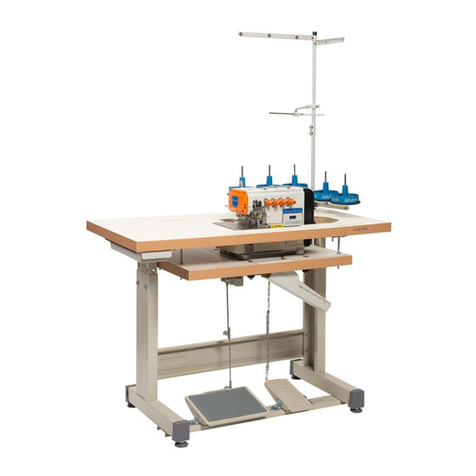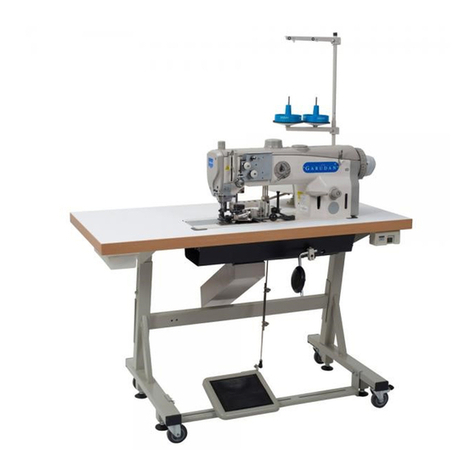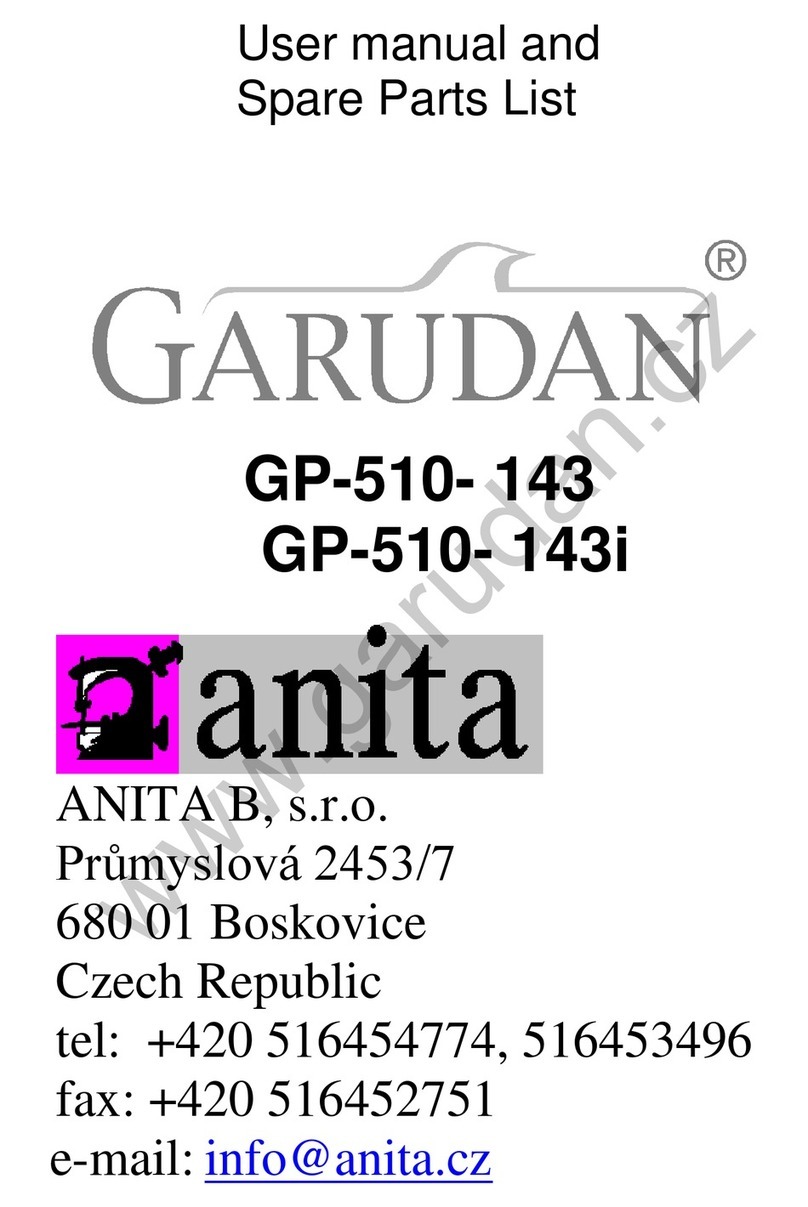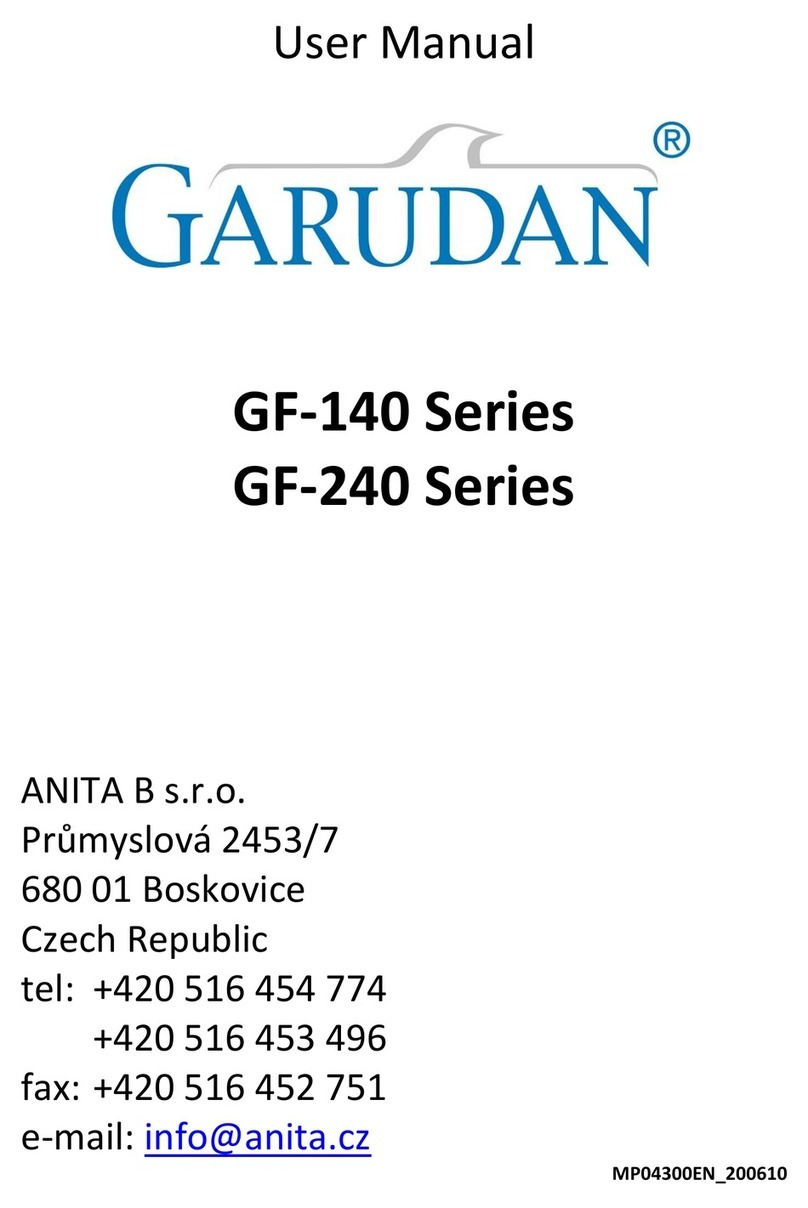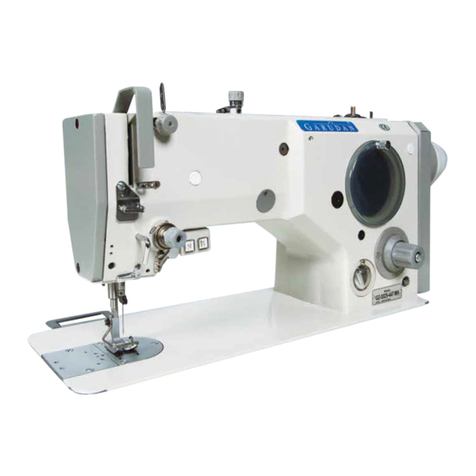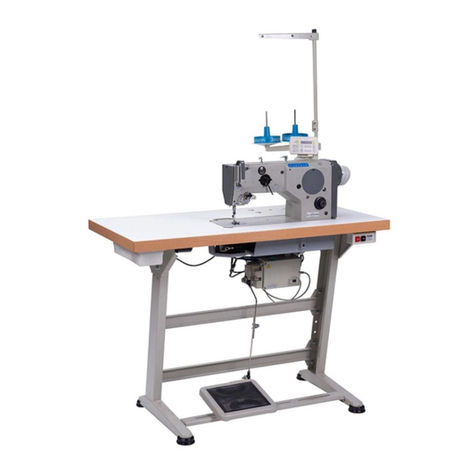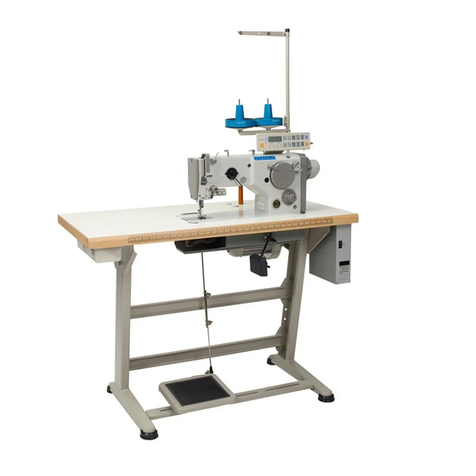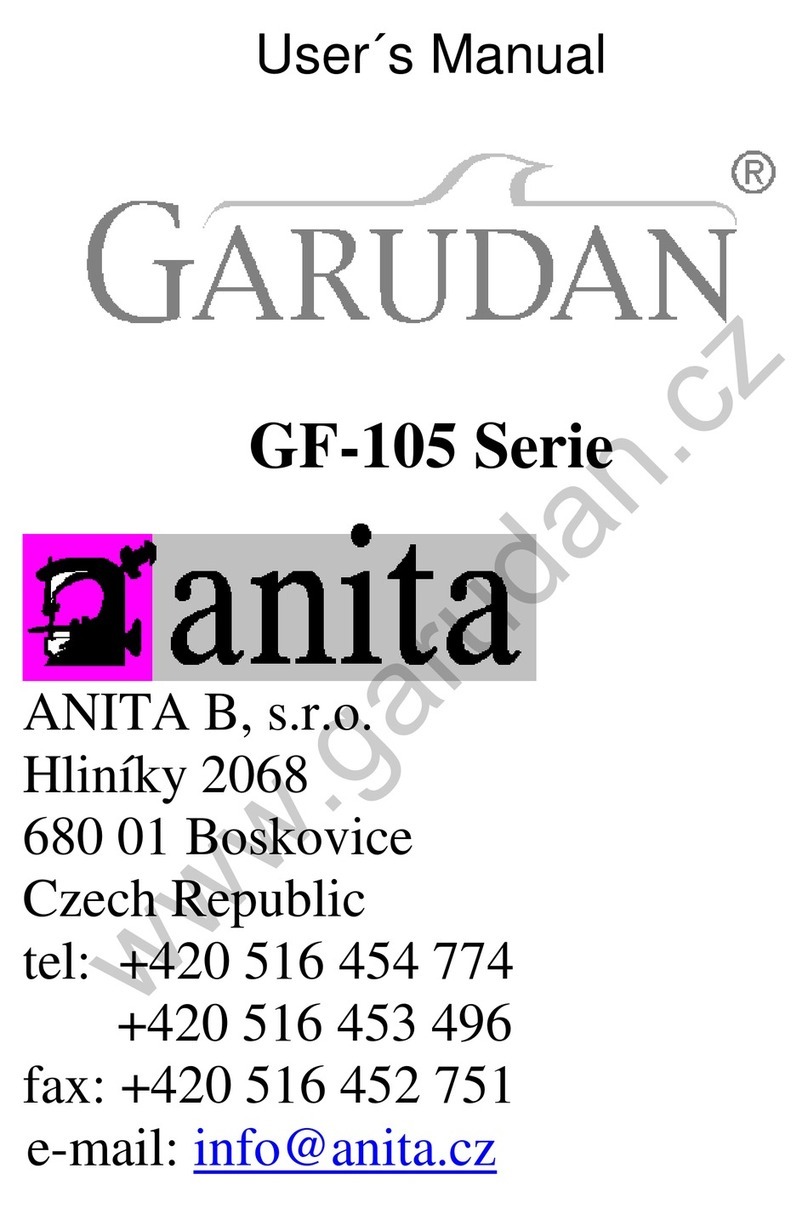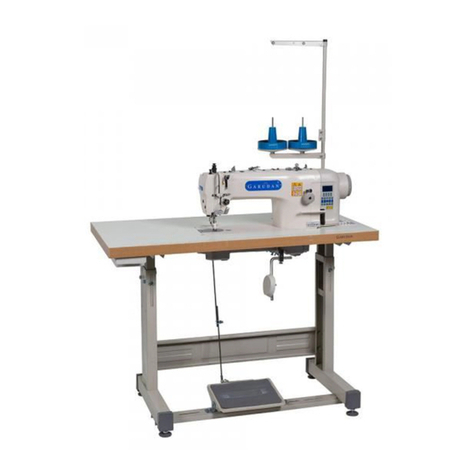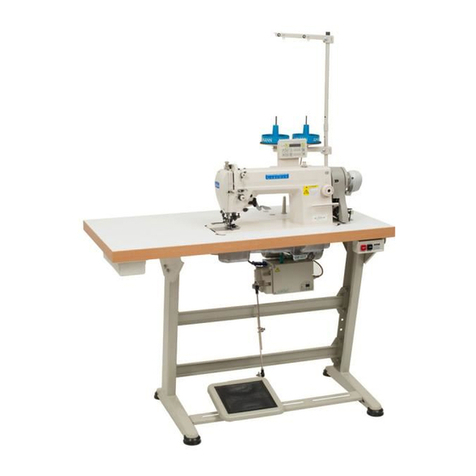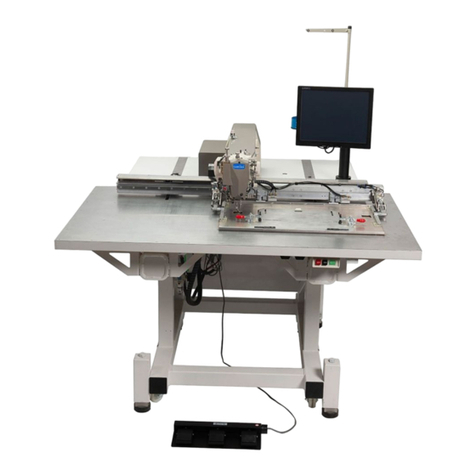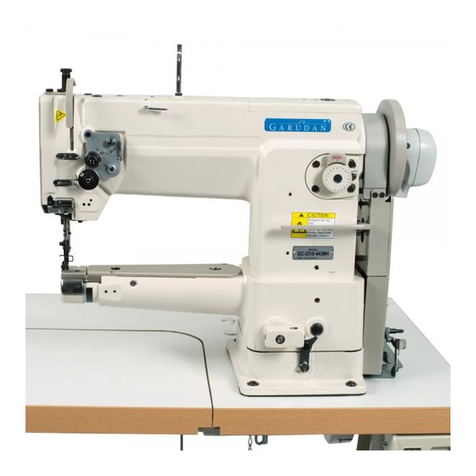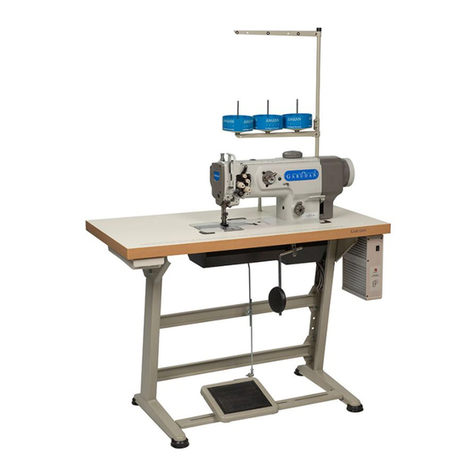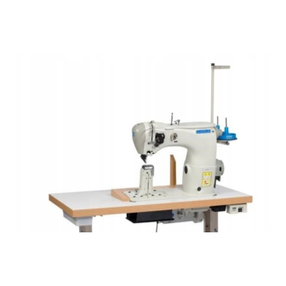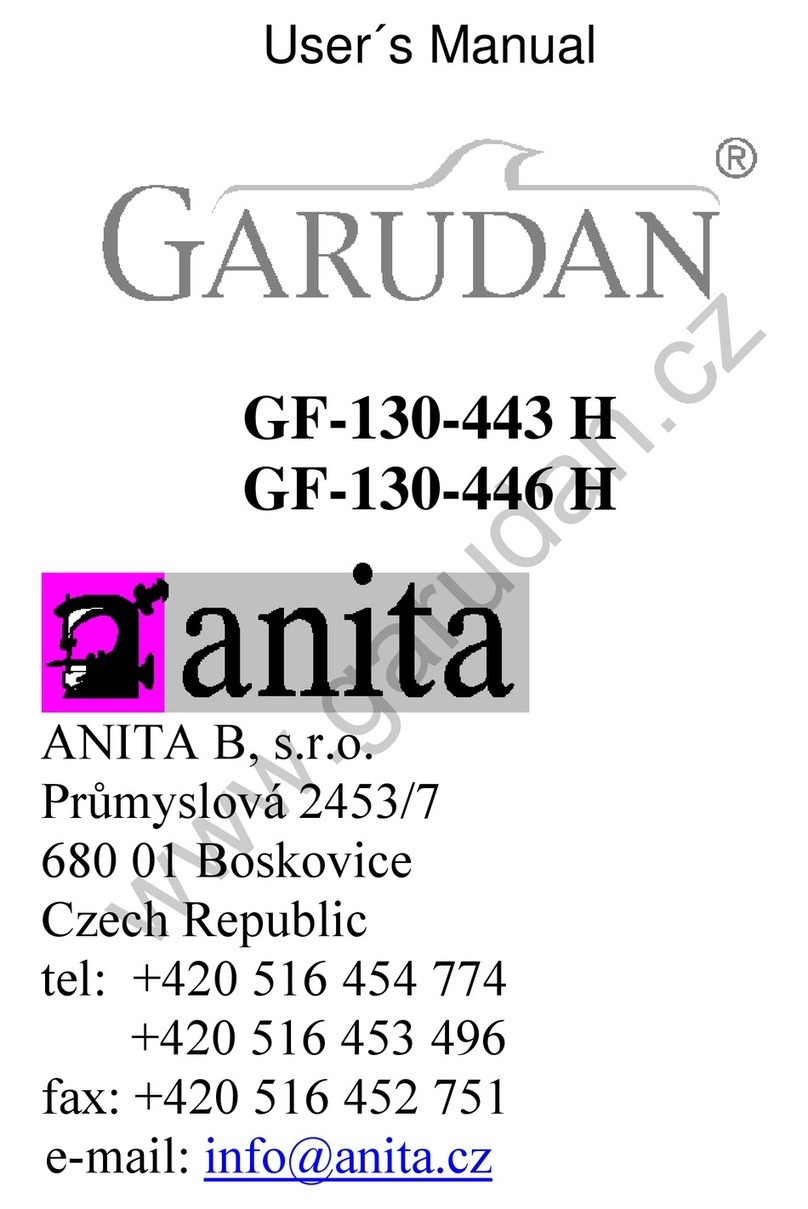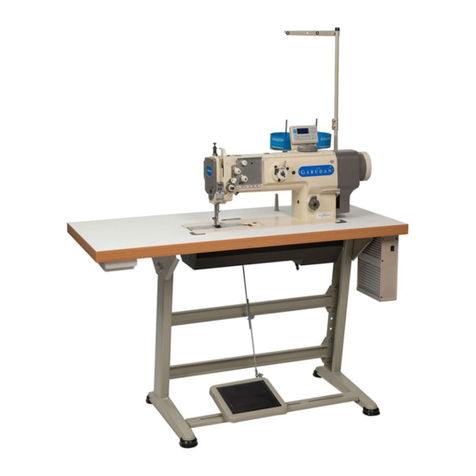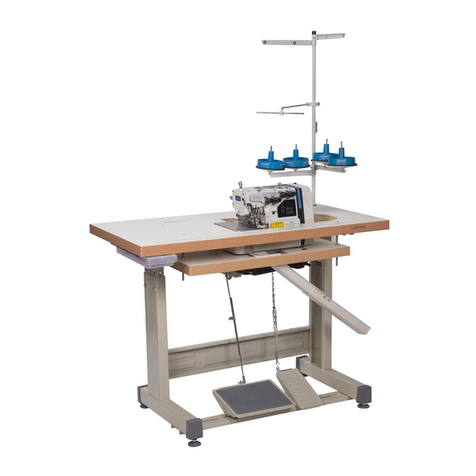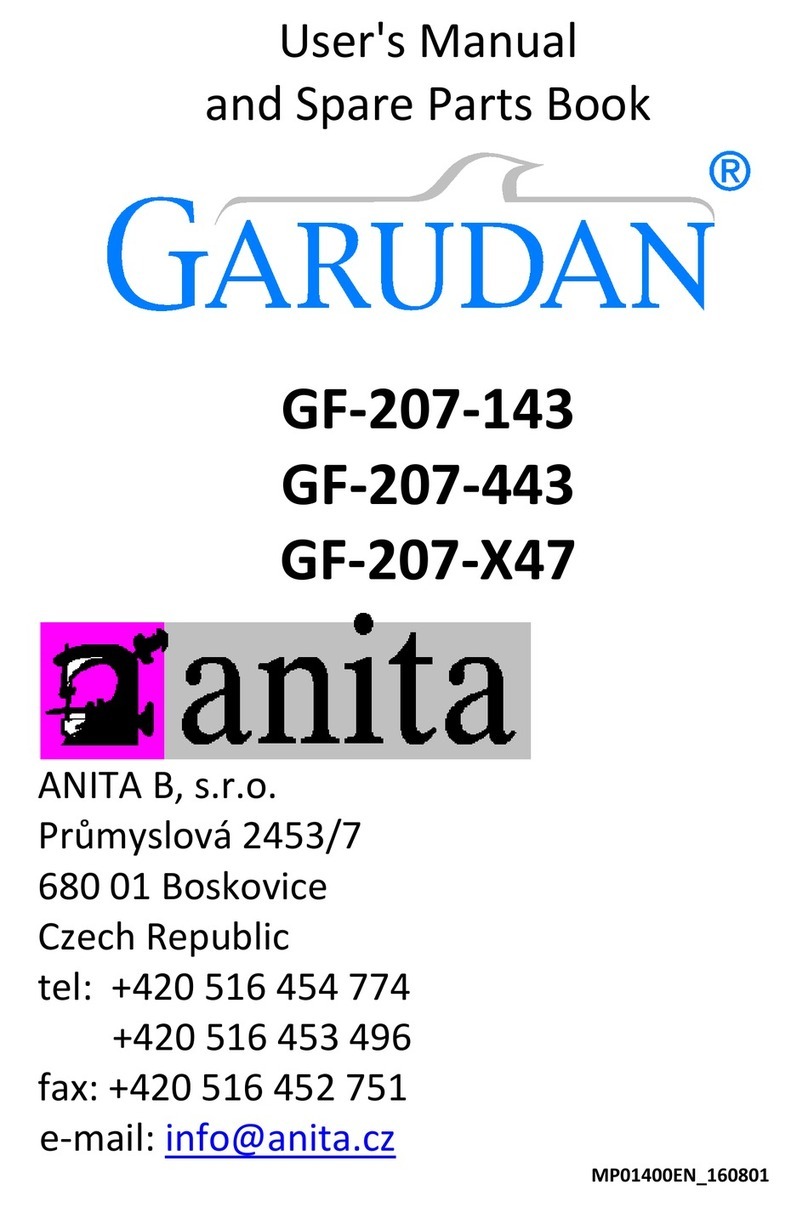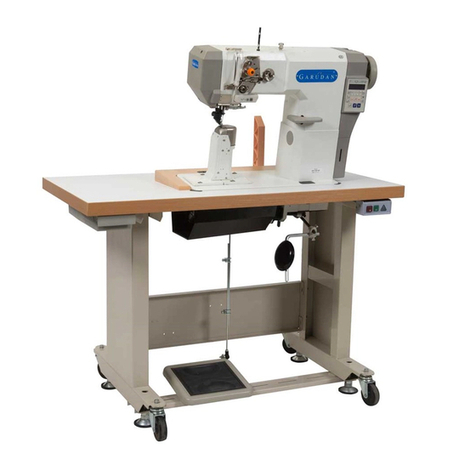© ANITA
MP04700EN_200120 GF-1115-147 LM, GF-1115-447 MH 3
Content
Safety instruction ............................................................................................................. 4
For safe operation ............................................................................................................ 6
1. Description ................................................................................................................... 8
2. Main technical specifications......................................................................................... 8
3. Mounting the machine.................................................................................................. 9
Fixing oil tray .......................................................................................................................... 9
Mounting the thread stand.................................................................................................. 11
Lubrication of rotating hook ................................................................................................ 12
Needle insertion...................................................................................................................14
Mounting the bobbin ...........................................................................................................15
Insertion of bobbin case....................................................................................................... 15
Threading the needle thread ............................................................................................... 16
Lifter of presser foot............................................................................................................. 18
Adjusting the stitch length ...................................................................................................19
Use of back tacking lever...................................................................................................... 19
Reverse stitch button ...........................................................................................................19
Operation by pedal............................................................................................................... 20
Adjusting the pedal .............................................................................................................. 21
Adjusting the presser foot pressure.....................................................................................22
Adjusting presser foot height............................................................................................... 23
Adjusting presser foot stroke by knee lever ........................................................................24
Adjusting thread tension...................................................................................................... 24
Adjusting length of upper thread after trimming ................................................................25
Adjusting height of feed dog................................................................................................ 25
Adjusting tilt of feed dog...................................................................................................... 26
4. Maintenance............................................................................................................... 27
Cleaning................................................................................................................................ 27
Lubrication and level of oil................................................................................................... 28
Carrying machine head ........................................................................................................28
